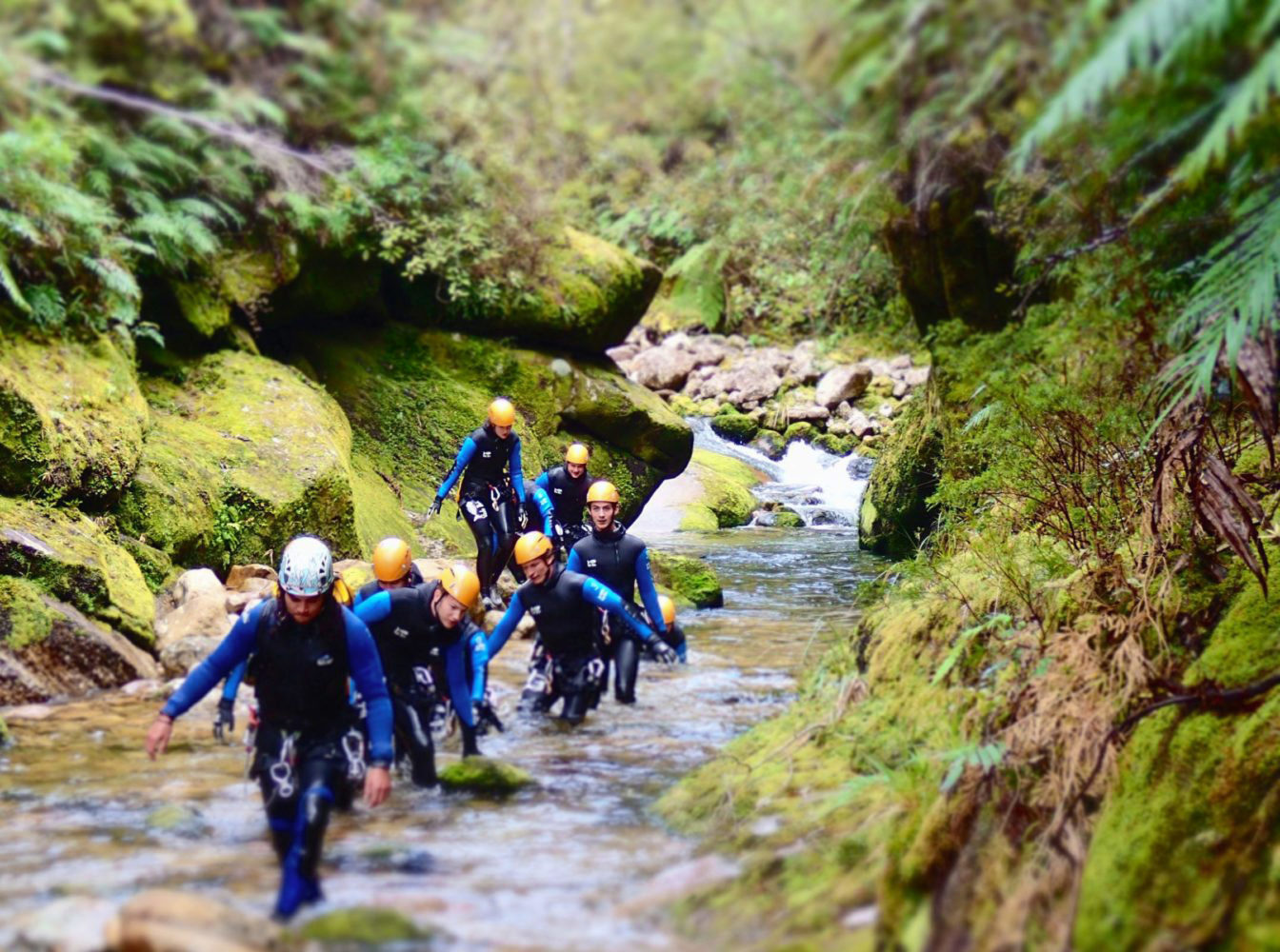Riding the Slots: Canyoning in Abel Tasman National Park
An apprehensive chuckle escapes my lips as I look down into the swirl of white water. The sound of my heartbeat drowns out the final instructions from our guide as I prep for the six-metre jump. After years of rock-climbing, I was certain I had a good head for heights, but my confidence cracks at the sight of the churning waters below.
My face is a few shades paler and my heartbeat is beyond controllable at this point; it’s a textbook case of the fight-or-flight response. I inhale sharply, look at Mitch — one of our two Abel Tasman Canyon guides for the day — and give him a quick nod.
A sudden rush of adrenaline hits as I take the two-step running start. I desperately try to position my second foot in the correct spot on the rock edge — I need to get that sufficient final thrust forward and land in the ‘safe zone’ of the white water below.
Seconds later I’m submerged in the surging water I had just been so wary of. I swim over and climb onto a large boulder to join the rest of the first-time canyoneers. I realise that I only had a vague idea of what was involved in canyoning until this point.
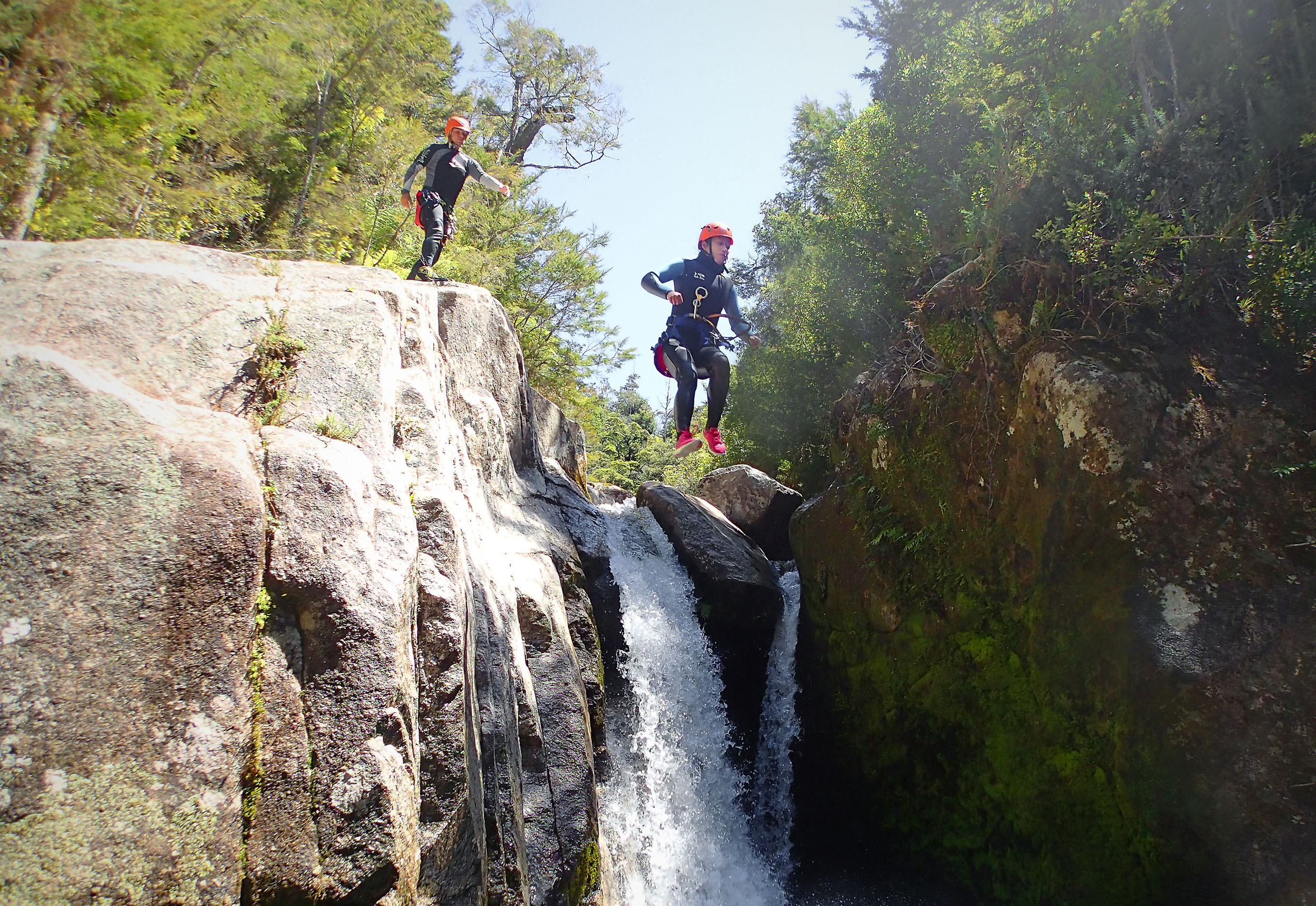
A canyon is a deep gorge in a mountain or plateau that is formed over centuries by a combination of wind and water erosion. Each gorge is unique, making a canyon an outdoor playground full of slots, sinkholes, caverns, waterfalls, and enticing crystal-clear pools. Canyoning, in the most basic terms, is the sport of descending these river gorges by swimming, jumping, sliding, climbing or abseiling (rappelling). Although not well known in the world of outdoor sports, canyoning has grown in popularity in recent years, with travellers worldwide visiting New Zealand for a world-class experience.
Torrent River in Abel Tasman National Park offers among some of the best canyoning in the country. Set on the northern tip of New Zealand’s South Island, the waters are temperate and surrounded by golden sand beaches and native wildlife. This is where I’m learning to appreciate the sport for the very first time.
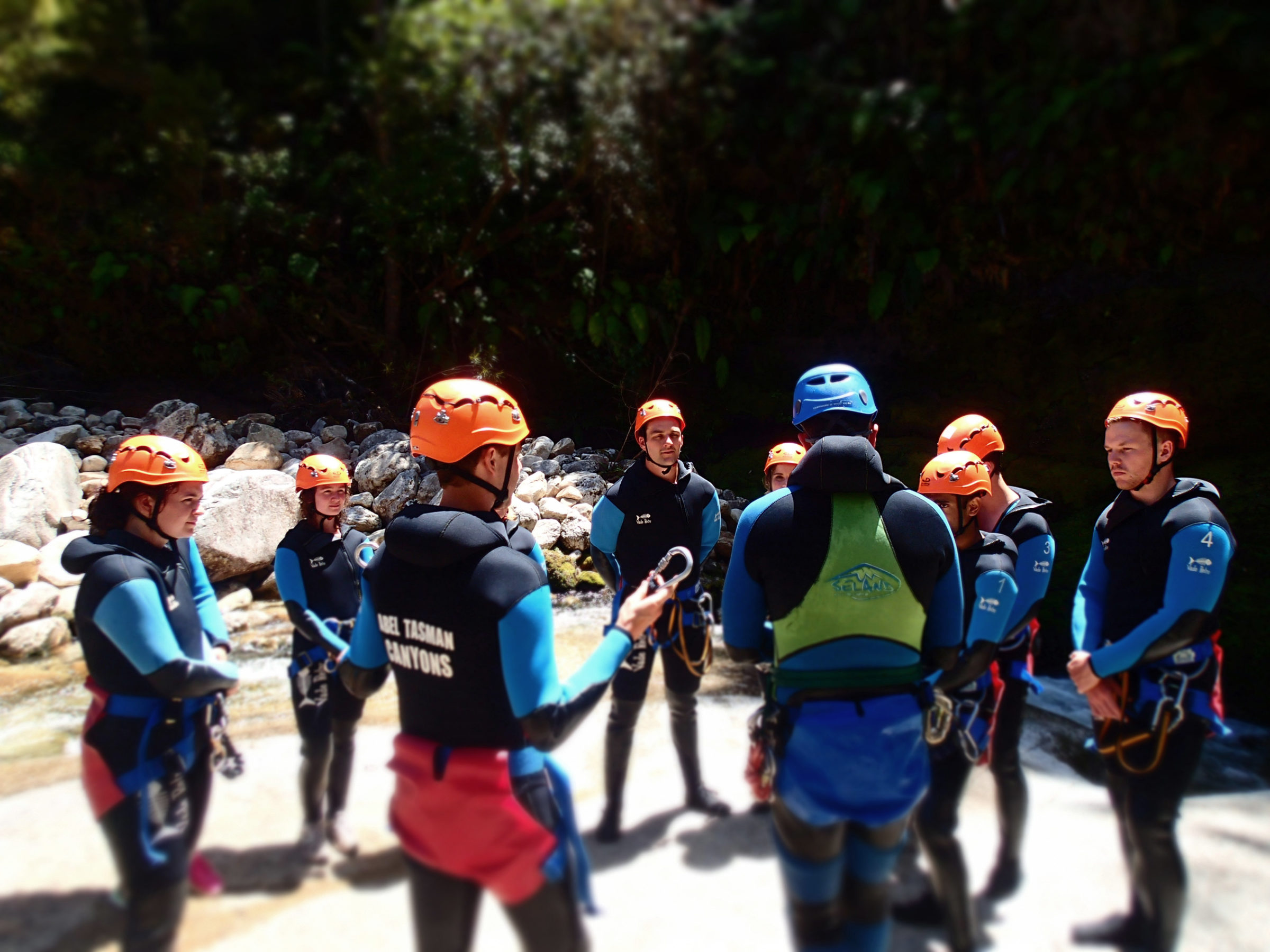
I put myself in the hands of experienced guides Drew and Mitch of Abel Tasman Canyons, two Scotsmen with ample experience in outdoor adventure sports and a true passion for canyoning. As well as Abel Tasman National Park, they also regularly lead tours through the vast Kahurangi National Park and the luscious Mount Richmond Forest Park. Upon arrival at our meeting place in Marahau, both Drew and Mitch appear relaxed, jovial and excited for the day ahead. After running through the safety precautions and checking our gear, our group boards the water taxi to head northeast through the Astrolabe Roadstead into Anchorage, the gateway to Abel Tasman National Park.
Once ashore in Anchorage, we hop out of the boat and dig our toes into the golden sand. A few tourists are swimming but most are making their way to and from the beachside campsite that acts as the main pit stop on the famous Abel Tasman Coastal Track. The forecast for the day was not as inviting as we had hoped for — overcast, with showers expected throughout the day — so we take a minute to soak up a few warming rays that are peeking through the ominous-looking clouds.
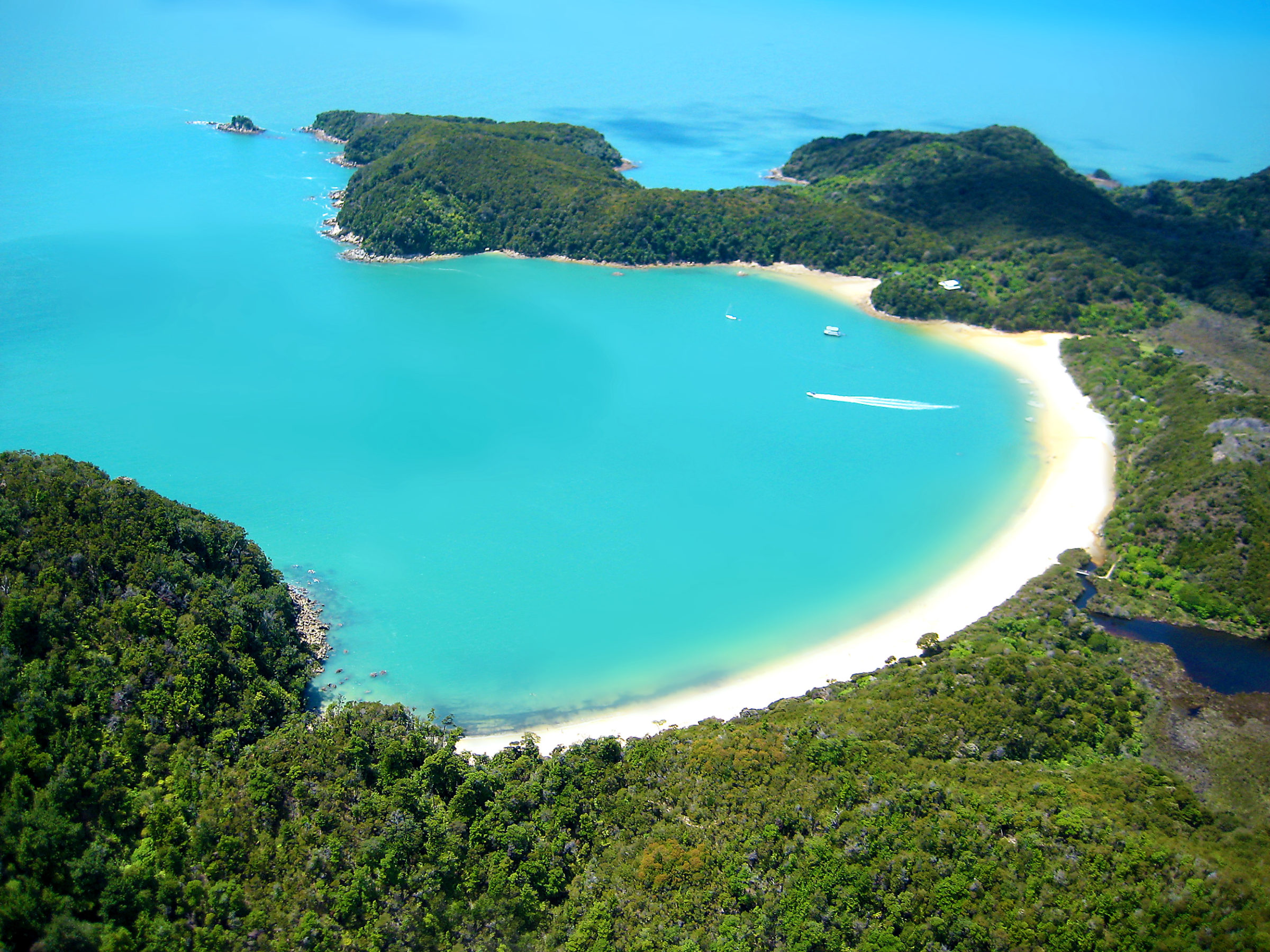
The group begins the ascent to the starting point of the Torrent River canyon, which involves a 90-minute walk along the first portion of the Abel Tasman Coastal Track. Whilst meandering through the lush forest and native bush, a well-informed and eager-to-share Drew introduces us to the flora and fauna of the area, including the flourishing silver tree fern. Called Ponga in Maori, the emblematic leaf is used for navigational purposes, with the silver underside of the leaf reflecting the moonlight and creating trail markers. Embodying the spirit of New Zealand, the silver tree fern is regarded as an iconic symbol of the country, and a source of pride.
An hour into our uphill walk, we stop for a short break at an opening in the bush just shy of 100 metres above sea level. We enjoy a small snack and rehydrate while being entertained by some animated storytelling by Drew, who recounts the tale of Abel Tasman, the Dutch explorer that infamously discovered New Zealand — and this national park — by chance.
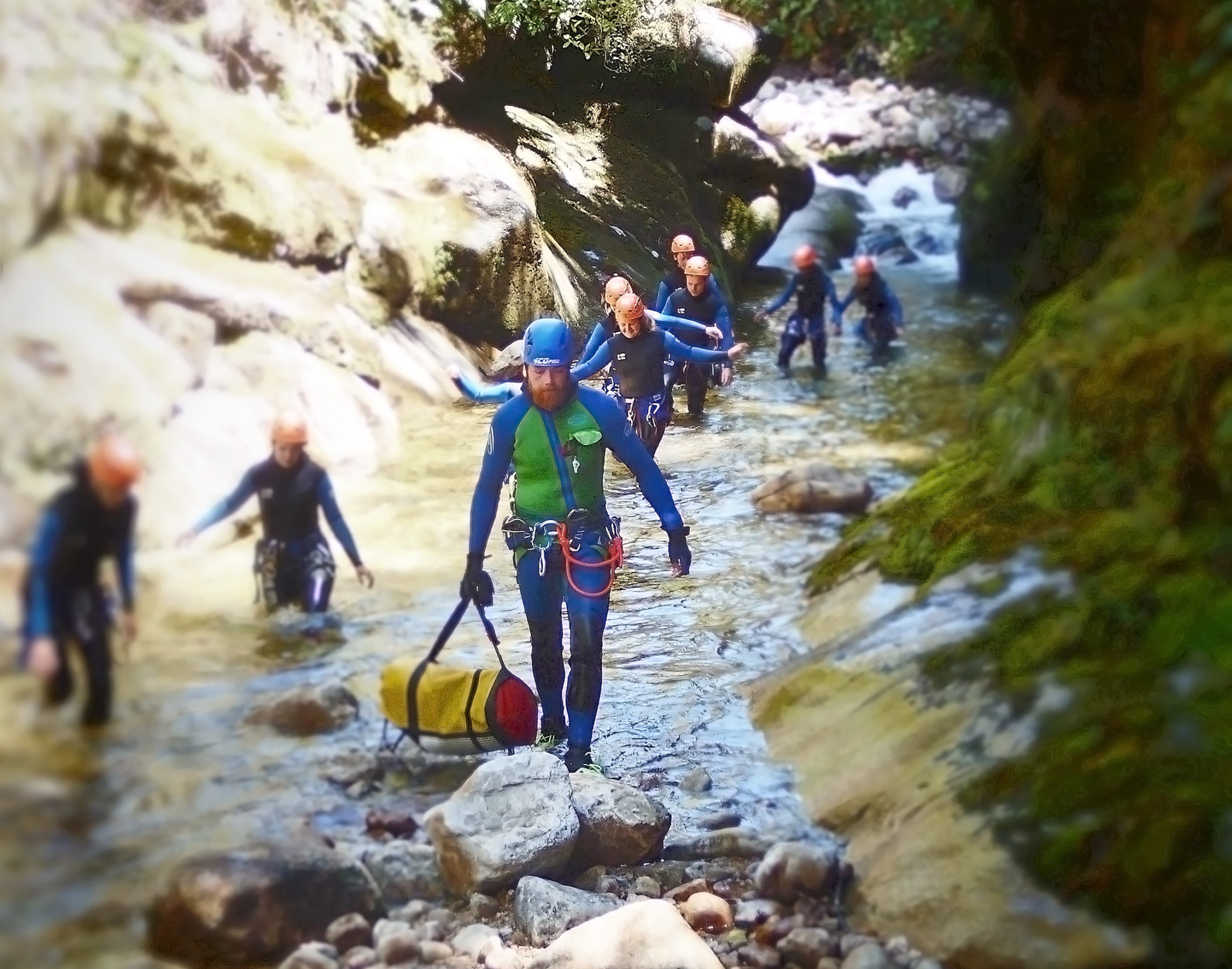
On the last leg of the approach we take a sharp right, veering off the path down a narrower, steeper and less defined trail where having a steady foot is key. The rugged path is primarily used and maintained by Abel Tasman Canyons, and leads to the starting point of the Torrent River canyon. We enjoy a pre-packed lunch courtesy of our guides and all-you-can-drink beverages courtesy of the clean, freshwater river that greets us upon arrival at the head of the canyon.
After lunch we gear up in our wetsuits, harnesses and helmets to begin the best part of the day: an action-packed afternoon of jumping, sliding, abseiling, zip-lining, and swimming down the Torrent River canyon. The sky appears sparingly through the large patches of grey clouds leaving the air cool and the water invigorating. Surrounded by lush green woodlands and the sounds of the trickling river, the granite canyon is quiet and remote, and free of other humans. I relish having the canyon all to myself — with the eleven others in my group, of course.
I tell myself ‘this is going to be fun’ just before I close my eyes, hold my breath and tip my body down a smooth slab of granite — headfirst.
The next few hours are filled with technical abseils, adrenaline-induced jumps, and long zip-lines requiring the neat tucking in of limbs, timely canon ball-type landings, and several leaps of faith. I’m happy to experience more moments of excitement than of trepidation. With their combined experience and enthusiasm, Drew and Mitch certainly put my fears at ease, talking me through various limit-pushing situations with uncomplicated instructions and words of encouragement.
Mid-way through the afternoon I find myself lying on my back in a gentler part of the river rapids, a little unsure of what to expect next. I tell myself ‘this is going to be fun’ just before I close my eyes, hold my breath and tip my body down a smooth slab of granite — headfirst. As the first to brave this obstacle, I didn’t know what to expect, and our two guides mischievously refrained from telling me that the slide ends with a sudden drop into a pool a few feet below. I surface a few short seconds later, having swallowed several gulps of water through my nostrils, gasping for air and laughing, before I swim over to the nearby shallows. Being the first one to go has its rewards: I get to relax in the warmth atop a large sun-splashed boulder and watch the expressions of my fellow canyoneers as they surface after experiencing the same slide-and-drop surprise.
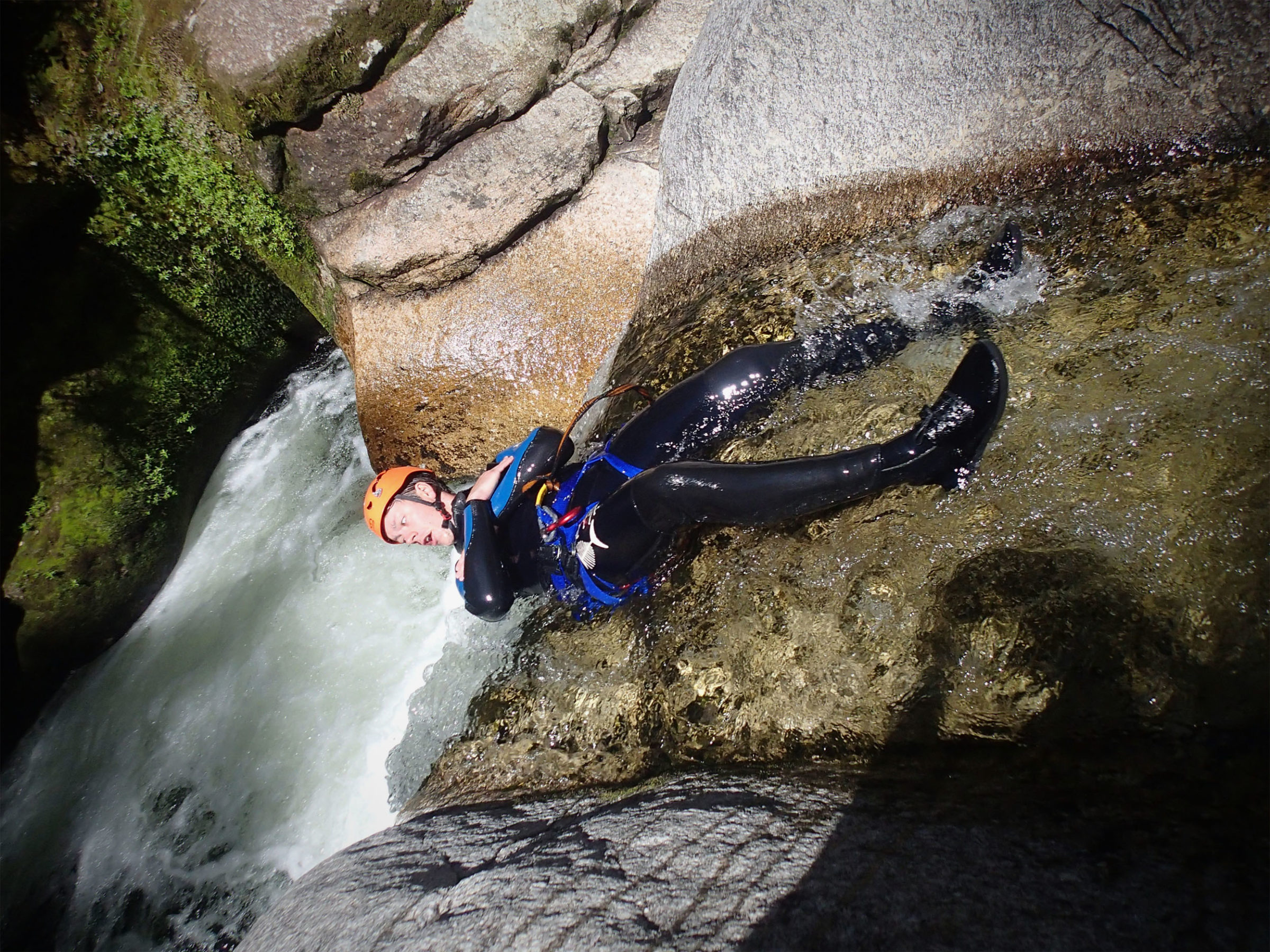
Toward the end of the canyon, the Torrent River empties into the glistening, turquoise waters of Cleopatra’s Pool and features an exhilarating moss-lined waterslide. Plunging down the natural granite chute, we emerge into a now peaceful part of the river and remove a portion of our wetsuits for a more comfortable walk out of the canyon. The last half hour of the descent is along the shallows, passing through a section of forest. After a final stroll across the Torrent Bay Estuary at low-tide, we return to Anchorage. The sun makes a welcome appearance as we devour some sugary snacks at a clearing in the Anchorage campsite and we peel off our clammy wetsuits, letting our skins breathe for the first time in several hours.
As the group climbs back onto the water taxi for our ride back to Marahau, I look around and see exhausted expressions on the faces of my fellow canyoneers. Likewise, I feel a similar sense of fatigue, a low that follows the high of such an exciting day. With both mental and physical strengths challenged, it was a day filled with action-packed water adventures and rushes of adrenaline — a way, unlike any other, to experience the beauty of this national park.
Karen toured the Torrent River canyon courtesy of Abel Tasman Canyons.
